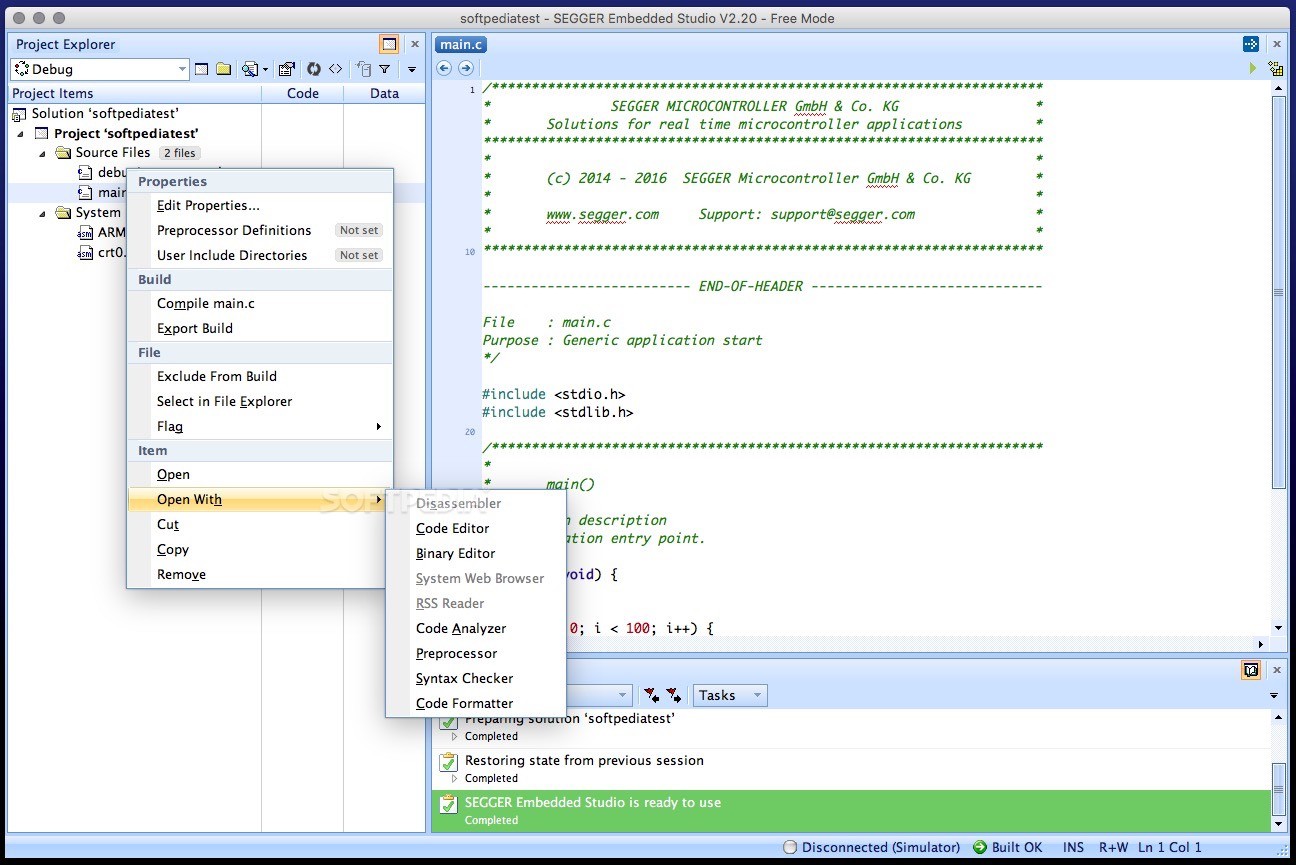

- #New file in emproject segger embedded studio how to#
- #New file in emproject segger embedded studio install#
- #New file in emproject segger embedded studio update#
- #New file in emproject segger embedded studio download#
Macro values to substitue in memory map nodes. The name of the file containing the memory map description. The macro $(IntDir) is set to this value. This property will have macro expansion applied to it. Specifies a relative path to the intermediate file directory. Specifies whether symbolic debug information is generated. Specifies whether or not to exclude the project/folder/file from the build. The file name to contain the dependencies.Įnable the removal of unused symbols from the executable. Suppress the display of startup banners and information messages. The set of configurations to batch build. Specifies whether or not to always rebuild the project/folder/file. Select the used embOS library configuration. Follow the corresponding tutorials for more details.Enables additional options to be supplied to the assembler. You can also use OpenOCD to debug your STM32 projects. Use the View->Embedded Memory Explorer to get a detailed report about the structure of your embedded binary, including the locations of sections in memory, sizes of individual functions, their disassembly view and worst-case stack analysis:.Simply click the CodeJumps labels near the function declarations to view references, call trees, functions “implementing” specific function pointers and so on: VisualGDB will automatically index your sources (and the STM32 package sources) and will let you navigate through them using CodeJumps.
#New file in emproject segger embedded studio update#
VisualGDB will automatically update your makefile and synchronize IntelliSense settings: you can reference various frameworks included in the STM32 package via the Embedded Frameworks page.

Ensure that Windows recognizes the device and loads the appropriate drivers.
#New file in emproject segger embedded studio install#
If you have not installed the Segger software package yet, follow the link in VisualGDB wizard to install it.
#New file in emproject segger embedded studio download#
VisualGDB will let you automatically download the debug method package if it is missing: If you want to use ST-Link or another JTAG/SWD debugger, simply select it from the list instead.
#New file in emproject segger embedded studio how to#


 0 kommentar(er)
0 kommentar(er)
